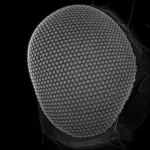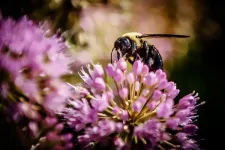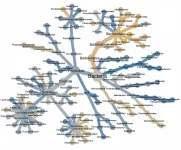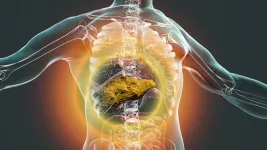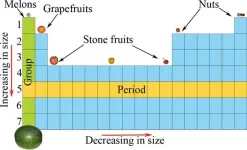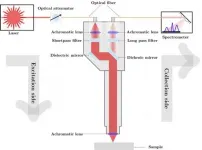Scientists find antibody that blocks dengue virus
2021-01-13
(Press-News.org) A team of researchers led by the University of California, Berkeley and the University of Michigan has discovered an antibody that blocks the spread within the body of the dengue virus, a mosquito-borne pathogen that infects between 50 and 100 million people a year. The virus causes what is known as dengue fever, symptoms of which include fever, vomiting and muscle aches, and can lead to more serious illnesses, and even death.
"Protein structures determined at the APS have played a critical role in the development of drugs and vaccines for several diseases, and these new results are key to the development of a potentially effective treatment against flaviviruses." -- Bob Fischetti, group leader with Argonne's X-ray Sciences Division and life sciences advisor to the APS director
Currently, there are no effective treatments or vaccines for the dengue virus. Since there are four different strains of the virus, building up antibodies against one strain can actually leave people more vulnerable to subsequent infection from another strain, which makes finding an effective therapeutic more difficult. Scientists using the Advanced Photon Source (APS), a U.S. Department of Energy (DOE) Office of Science User Facility located at the DOE's Argonne National Laboratory, have reported success.
The dengue virus uses a particular protein, called Non-Structural Protein 1 (NS1), to latch onto the protective cells around organs. It weakens the protective barrier, allowing the virus to infect the cell, and may cause the rupture of blood vessels. The research team's antibody, called 2B7, physically blocks the NS1 protein, preventing it from attaching itself to cells and slowing the spread of the virus. Moreover, because it attacks the protein directly and not the virus particle itself, 2B7 is effective against all four strains of the dengue virus.
The research team used X-ray diffraction techniques to determine structures of the NS1 protein with a bound antibody (2B7) and showed how the antibody provides protection against the virus. These diffraction images were obtained at the General Medical Sciences and Cancer Institutes Structural Biology Facility (GM/CA) at the APS.
Researchers showed that the 2B7 antibody effectively blocks the spread of the dengue virus in live mice. They reported their results in Science. The paper suggests that this same antibody could provide new treatments for other flaviviruses like dengue, a group that includes Zika and West Nile.
"Flaviviruses infect hundreds of millions of people a year, and tens of thousands die from the associated diseases," said Argonne's Bob Fischetti, group leader with the X-ray Sciences Division and life sciences advisor to the APS director. "Protein structures determined at the APS have played a critical role in the development of drugs and vaccines for several diseases, and these new results are key to the development of a potentially effective treatment against flaviviruses."
INFORMATION:
Read the University of Michigan press release.
About the Advanced Photon Source
The U. S. Department of Energy Office of Science's Advanced Photon Source (APS) at Argonne National Laboratory is one of the world's most productive X-ray light source facilities. The APS provides high-brightness X-ray beams to a diverse community of researchers in materials science, chemistry, condensed matter physics, the life and environmental sciences, and applied research. These X-rays are ideally suited for explorations of materials and biological structures; elemental distribution; chemical, magnetic, electronic states; and a wide range of technologically important engineering systems from batteries to fuel injector sprays, all of which are the foundations of our nation's economic, technological, and physical well-being. Each year, more than 5,000 researchers use the APS to produce over 2,000 publications detailing impactful discoveries, and solve more vital biological protein structures than users of any other X-ray light source research facility. APS scientists and engineers innovate technology that is at the heart of advancing accelerator and light-source operations. This includes the insertion devices that produce extreme-brightness X-rays prized by researchers, lenses that focus the X-rays down to a few nanometers, instrumentation that maximizes the way the X-rays interact with samples being studied, and software that gathers and manages the massive quantity of data resulting from discovery research at the APS.
This research used resources of the Advanced Photon Source, a U.S. DOE Office of Science User Facility operated for the DOE Office of Science by Argonne National Laboratory under Contract No. DE-AC02-06CH11357.
Argonne National Laboratory seeks solutions to pressing national problems in science and technology. The nation's first national laboratory, Argonne conducts leading-edge basic and applied scientific research in virtually every scientific discipline. Argonne researchers work closely with researchers from hundreds of companies, universities, and federal, state and municipal agencies to help them solve their specific problems, advance America's scientific leadership and prepare the nation for a better future. With employees from more than 60 nations, Argonne is managed by UChicago Argonne, LLC for the U.S. Department of Energy's Office of Science.
The U.S. Department of Energy's Office of Science is the single largest supporter of basic research in the physical sciences in the United States and is working to address some of the most pressing challenges of our time. For more information, visit https://energy.gov/science.
[Attachments] See images for this press release:
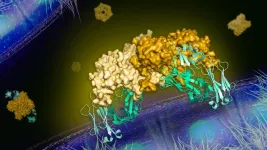
ELSE PRESS RELEASES FROM THIS DATE:
2021-01-13
The fascinating compound eyes of insects consist of hundreds of individual eyes known as "facets". In the course of evolution, an enormous variety of eye sizes and shapes has emerged, often representing adaptations to different environmental conditions. Scientists, led by an Emmy Noether research group at the University of Göttingen, together with scientists from the Andalusian Centre for Developmental Biology (CABD) in Seville, have now shown that these differences can be caused by very different changes in the genome of fruit flies. The study was published ...
2021-01-13
HOUSTON - (Jan. 13, 2021) - Pyrolyzed plastic ash is worthless, but perhaps not for long.
Rice University scientists have turned their attention to Joule heating of the material, a byproduct of plastic recycling processes. A strong jolt of energy flashes it into graphene.
The technique by the lab of Rice chemist James Tour produces turbostratic graphene flakes that can be directly added to other substances like films of polyvinyl alcohol (PVA) that better resist water in packaging and cement paste and concrete, dramatically increasing their compressive strength. ...
2021-01-13
CHAMPAIGN, Ill. -- A dramatic decline in bees and other pollinating insects presents a threat to the global food supply, yet it's getting little attention in mainstream news.
That's the conclusion of a study from researchers at the University of Illinois Urbana-Champaign, published this week in a special issue of the Proceedings of the National Academy of Sciences. The study was based on a search of nearly 25 million news items from six prominent U.S. and global news sources, among them The New York Times, The Washington Post and The Associated Press.
The study found "vanishingly low levels of attention to pollinator population topics" over several decades, even compared with ...
2021-01-13
Wetlands are the dominant natural source of atmospheric methane, a potent greenhouse gas which is second only to carbon dioxide in its importance to climate change. Anthropogenic climate change is expected to enhance methane emissions from wetlands, resulting in further warming. However, wetland methane feedbacks were not fully assessed in the Intergovernmental Panel on Climate Change (IPCC) Fifth Assessment Report, posing a challenge to meeting the global greenhouse gas mitigation goals set under the Paris Agreement.
To understand how wetland methane cycling may evolve and drive climate feedbacks in the future, scientists are increasingly looking to Earth's past.
"Ice core records indicate ...
2021-01-13
People worldwide want their coffee to be both satisfying and reasonably priced. To meet these standards, roasters typically use a blend of two types of beans, arabica and robusta. But, some use more of the cheaper robusta than they acknowledge, as the bean composition is difficult to determine after roasting. Now, researchers reporting in ACS' Journal of Agricultural and Food Chemistry have developed a new way to assess exactly what's in that cup of joe.
Coffee blends can have good quality and flavor. However, arabica beans are more desirable than other types, resulting in a higher market value for blends containing a higher proportion of this variety. In some cases, producers dilute their blends with the less expensive robusta beans, yet that is hard for consumers ...
2021-01-13
DURHAM, N.C. -- Biomedical engineers at Duke University have devised an algorithm to remove contaminated microbial genetic information from The Cancer Genome Atlas (TCGA). With a clearer picture of the microbiota living in various organs in both healthy and cancerous states, researchers will now be able to find new biomarkers of disease and better understand how numerous cancers affect the human body.
In the first study using the newly decontaminated dataset, the researchers have already discovered that normal and cancerous organ tissues have a slightly different microbiota composition, that bacteria from these diseased sites can enter the bloodstream, and that this bacterial information could help diagnose ...
2021-01-13
Liver transplant priority in the U.S. goes to the sickest patients, which fails to consider other important factors, including how long patients are likely to survive post-transplant.
Researchers with Sylvester Comprehensive Cancer Center at the University of Miami Miller School of Medicine are collaborating with faculty at the University of Pennsylvania to develop a risk score that more comprehensively prioritizes liver cancer patients for transplantation.
Their paper documenting the development and validation of the LiTES-HCC score to predict post-transplant survival for hepatocellular carcinoma, or liver cancer, patients was published in the highly respected peer-reviewed Journal of Hepatology.
The ...
2021-01-13
Egg cells are among the largest cells in the animal kingdom. If moved only by the random jostlings of water molecules, a protein could take hours or even days to drift from one side of a forming egg cell to the other. Luckily, nature has developed a faster way: cell-spanning whirlpools in the immature egg cells of animals such as mice, zebrafish and fruit flies. These vortices enable cross-cell commutes that take just a fraction of the time. But until now, scientists didn't know how these crucial flows formed.
Using mathematical modeling, researchers now have an answer. The gyres result from the collective behavior of rodlike molecular ...
2021-01-13
Many students, especially non-science majors, dread chemistry. The first lesson in an introductory chemistry course typically deals with how to interpret the periodic table of elements, but its complexity can be overwhelming to students with little or no previous exposure. Now, researchers reporting in ACS' Journal of Chemical Education introduce an innovative way to make learning about the elements much more approachable -- by using "pseudo" periodic tables filled with superheroes, foods and apps.
One of the fundamental topics taught in first-year undergraduate chemistry courses is ...
2021-01-13
WASHINGTON -- In a new study, researchers show that a light-based analytical technique known as Raman spectroscopy could aid in early detection of oral squamous cell carcinoma (OSCC).
OSCC is the most prevalent type of oral cancer and ranks among the most common cancers diagnosed worldwide. Although effective treatments are available, the cancer is often not detected until a late stage, resulting in overall poor prognosis.
"Raman spectroscopy is not only label-free and non-invasive, but it can potentially be used in ambient light conditions," says research team leader Levi Matthies from University Medical Center Hamburg-Eppendorf in Germany. "This makes it promising for use as a potential screening tool ...
LAST 30 PRESS RELEASES:
[Press-News.org] Scientists find antibody that blocks dengue virus

